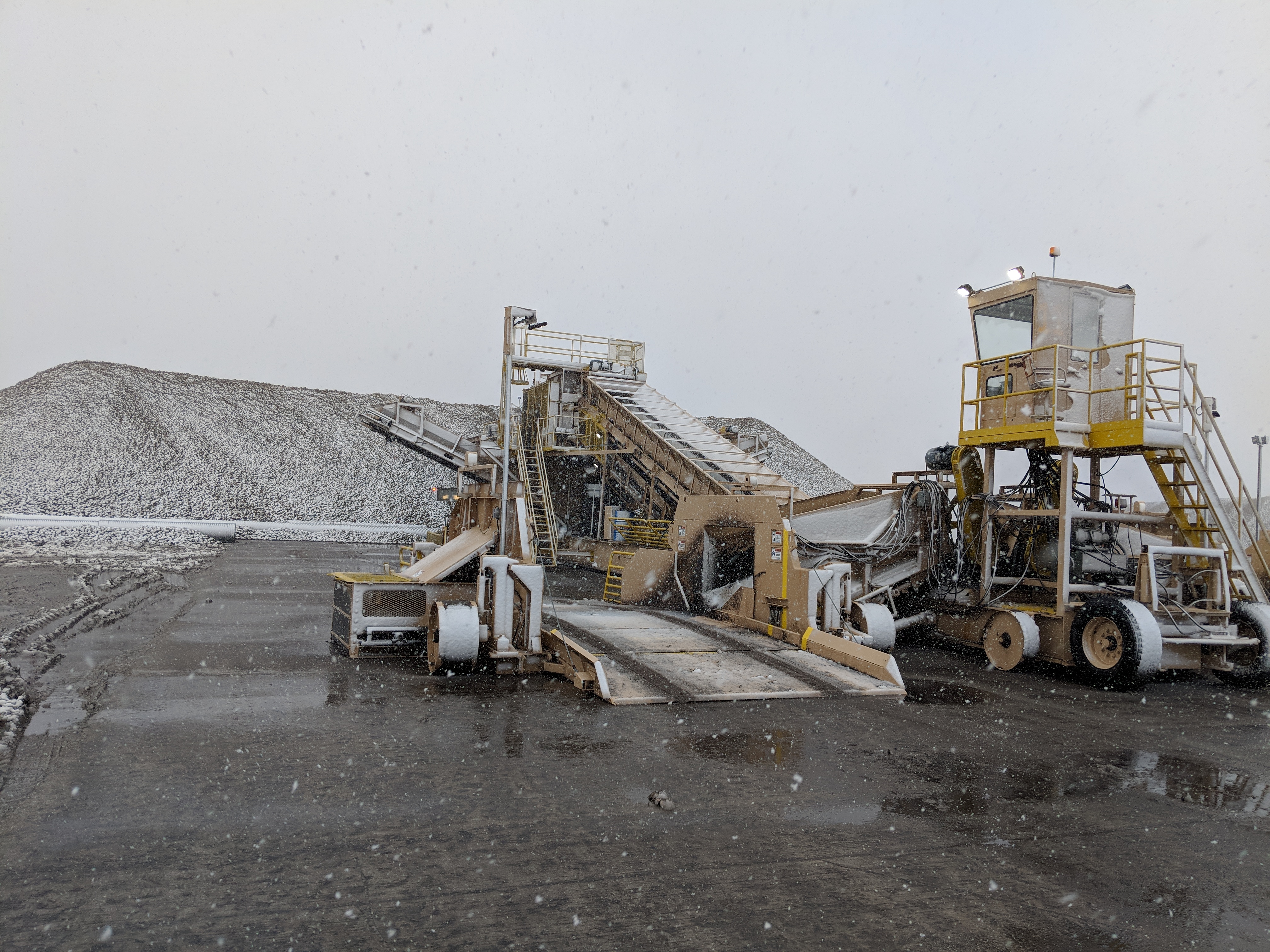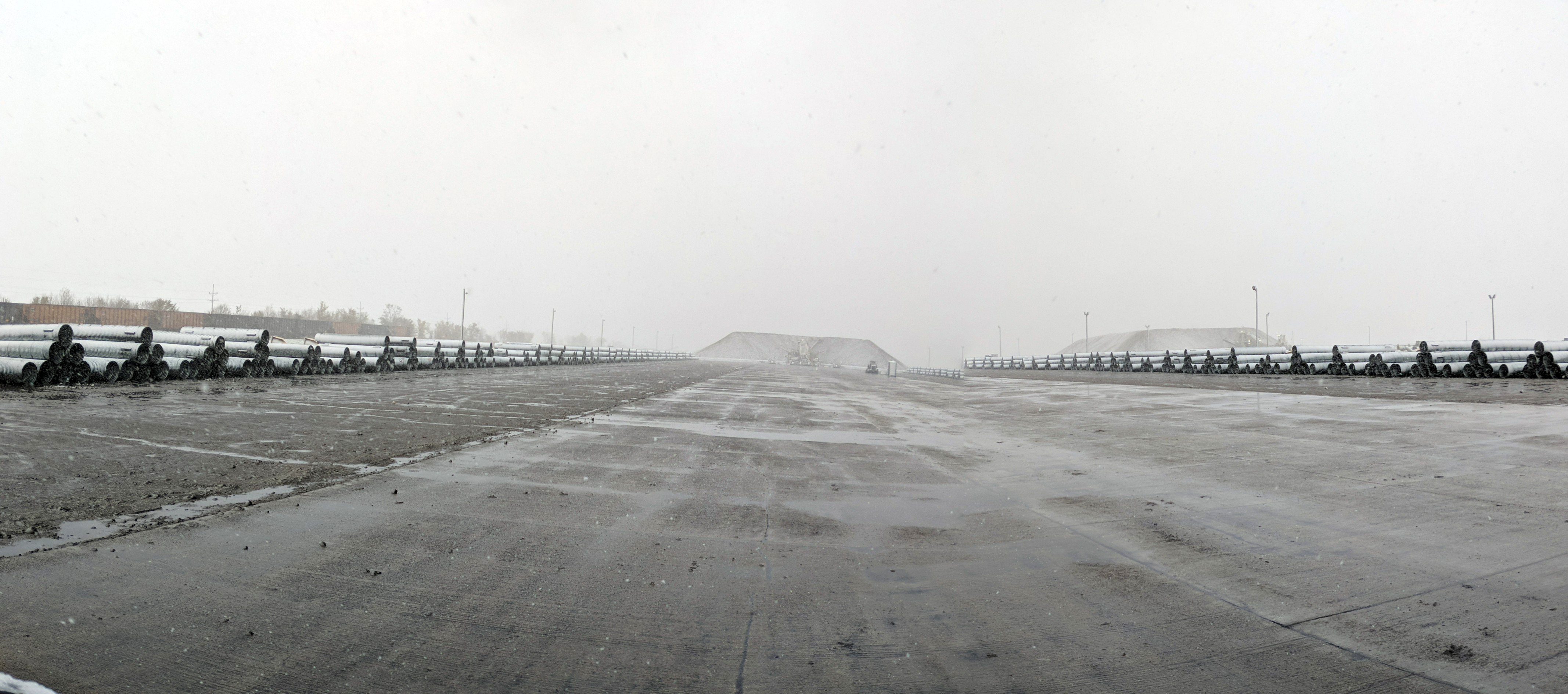
This is a piler, a machine that unloads the sugar beets from the trucks hauling it in from the harvest in Crookston, Minn., separates the beets from the dirt, returns the dirt to the truck and piles the beets outside near the American Crystal factory in the city. That’s some of them in the background.
By the end of the harvest, there will be piles of sugar beets all the way out to where I was when I took this picture. And there are several yards just like it near the factory.

In the spring, this might start to smell a bit. It’s the smell of money. Sugar beets are Minnesota’s “money crop.”
But there was nothing happening on Wednesday. The yards were empty, the machines were silent. There were no trucks. Along the fields from Ada, Minn., into Crookston, harvesters, combines, and trailers sit idled. It’s been raining and snowing and the harvest is on hold.
“What happens to all the workers when it’s like this?” I asked my guide, Allan Dragseth, whom I was in town to interview for a NewsCut feature series I’m working on.
“They’re laid off,” he said.
These are the realities of life in agriculture that we city slickers — and our big-city media — rarely consider.
When the weather is bad, we’ll occasionally pen a story about a farmer’s woes without considering who really bears the heaviest burden: the migrant worker who doesn’t work when the weather is bad.
In some cases, the machines are operated by retired farmers, who live in recreational vehicles and travel the country helping out. A campground in Crookston is a testament to the lifestyle.
“If it keeps up like this, I worry they’ll just start leaving,” he said.
They’ll search for work where the weather allows it.
And that’s how weather — and perhaps climate — creates a labor shortage in rural Minnesota.
